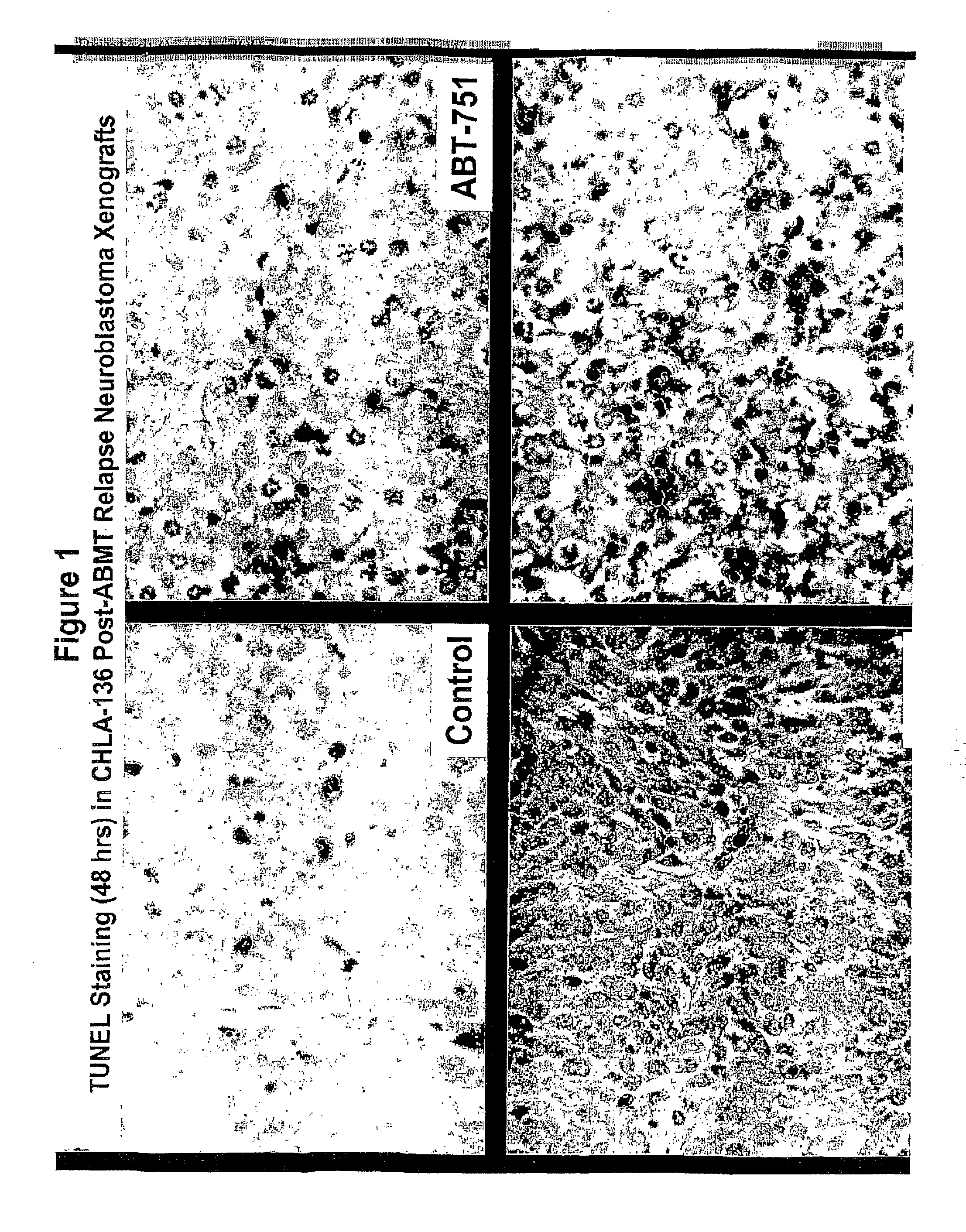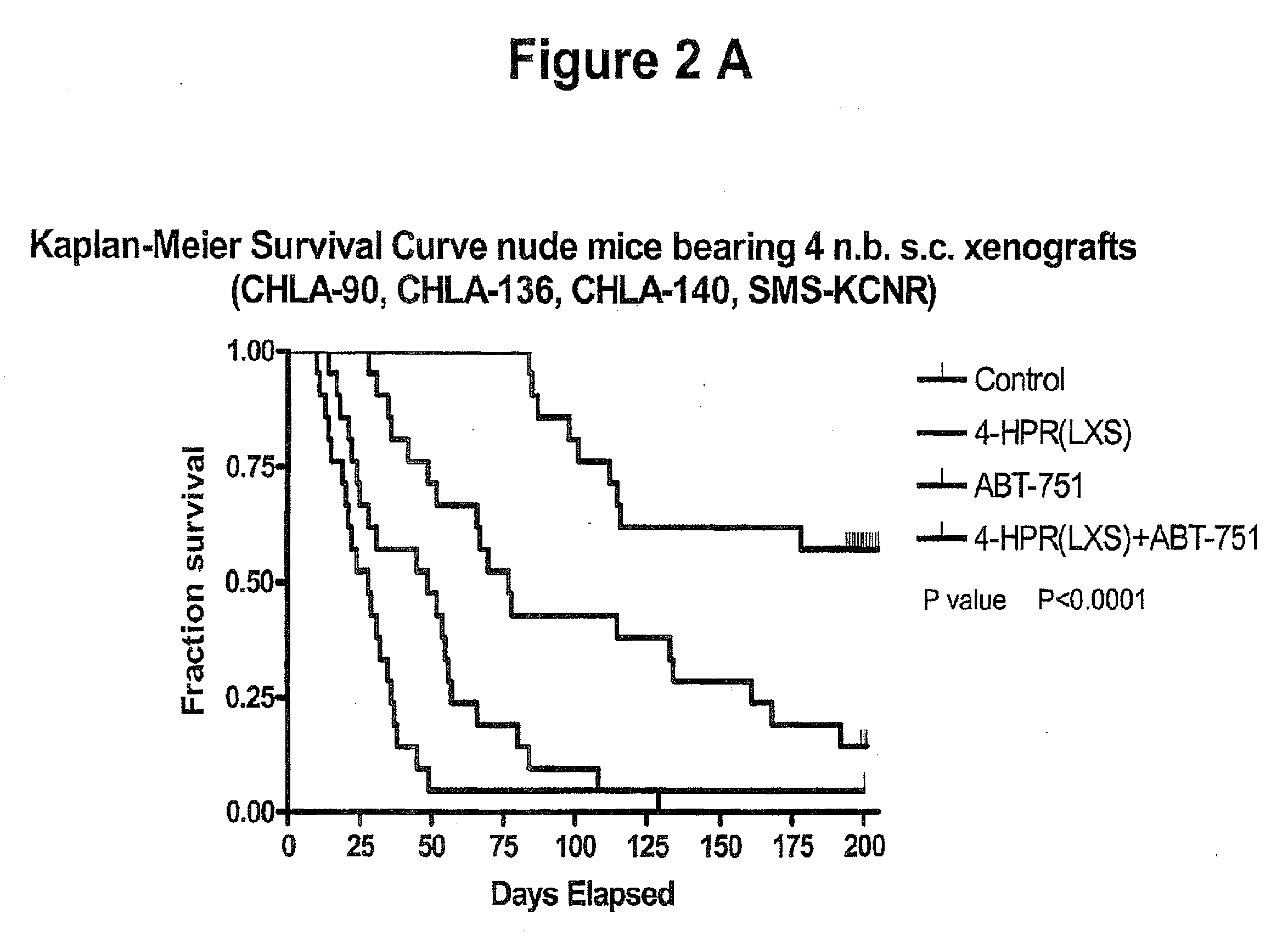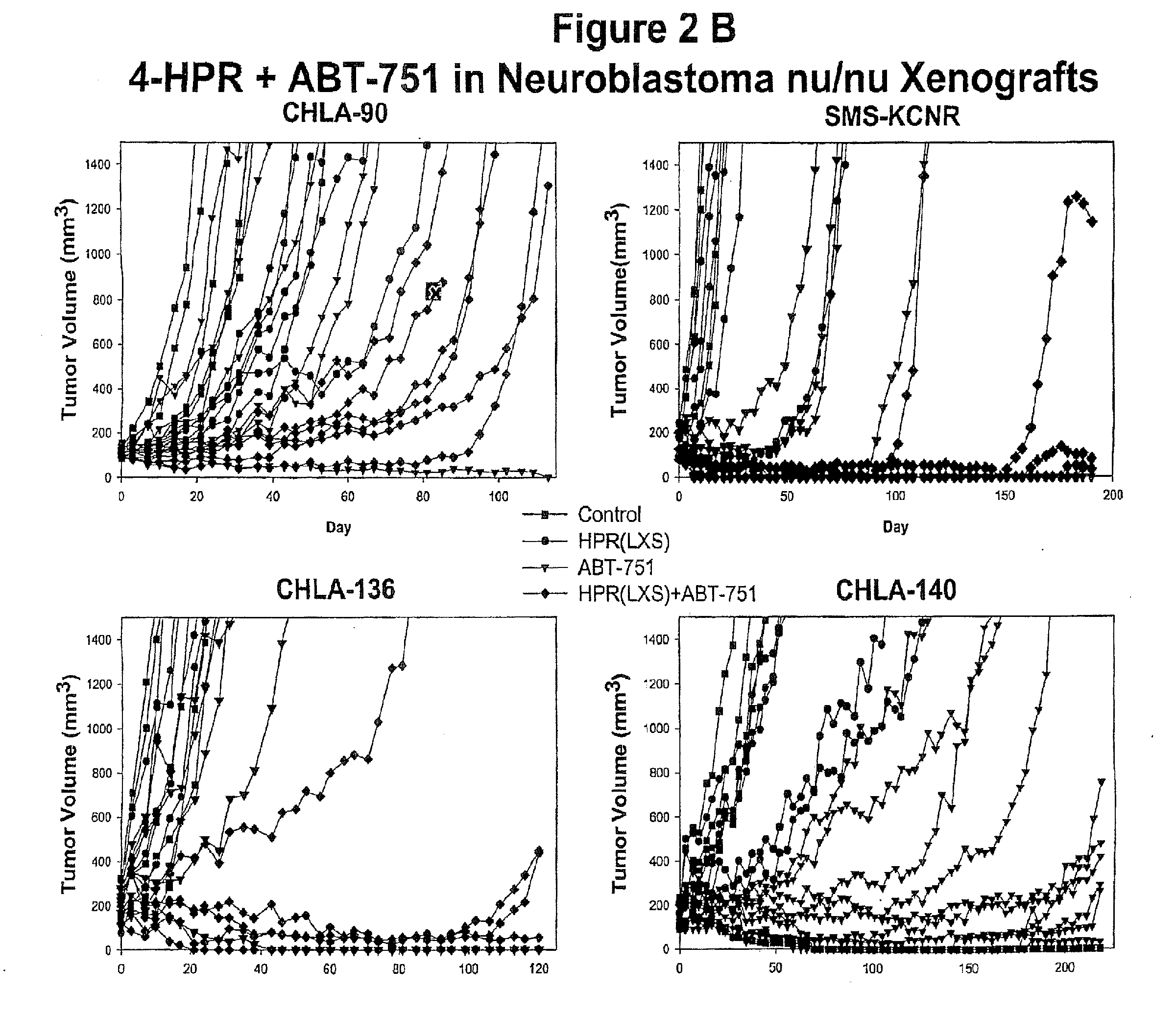Drug combinations to treat hyperproliferative disorders
a hyperproliferative disorder and drug combination technology, applied in the direction of drug compositions, biocide, heterocyclic compound active ingredients, etc., to achieve the effect of prolonging the survival of the host and slowing the proliferation or growth of the cancer cell
- Summary
- Abstract
- Description
- Claims
- Application Information
AI Technical Summary
Benefits of technology
Problems solved by technology
Method used
Image
Examples
example 1
[0066]Treating cancer in xenografts with fenretinide+ABT-751. Administration of fenretinide and ABT-751 in combination to nu / nu mice bearing subcutaneous xenografts of multi-drug resistant neuroblastoma xenografts (tumor cell lines are described in: Keshelava N, Zuo J J, Chen P, Waidyaratine S N, Luna M C, Gomer C J, Triche T J, Reynolds C P: Loss of p53 function confers high-level multi-drug resistance in neuroblastoma cell lines. Cancer Research 61:6185-6193, 2001, and xenograft methods are described in: Reynolds, C P, Sun B C, DeClerck Y A, Moats R A: Assessing growth and response to therapy in murine tumor models. Methods in Molecular Medicine Chemosensitivity Vol 2 ed. Blumenthal R D, Totowa: Humana Press pp 335-350, 2005. FIG. 1 shows photomicrographs showing increased apoptotic cell death by TUNEL (detection of internucelosomal DNA breaks using terminal nucleotidyl transferase) assay when the multidrug-resistant human neuroblastoma cell line CHLA-136 was grown as subcutaneous...
example 2
[0069]Treating lymphoma xenografts with fenretinide combined with vincristine. FIG. 3 demonstrates that survival of immunocomprised mice bearing the human Ramos Burkitts lymphoma cell line grown as subcutaneous tumor xenografts was increased by fenretinide+vincristine compared to either drug separately even in a tumor cell line minimally responsive to fenretinide or vincristine as single agents at the drug doses employed. Testing of fenretinide+vincristine was carried out as described for fenretinide+ABT-751 in Example 1, except that vincristine was given by i.p. injection twice a week during the 5 day administration of fenretinide.
example 3
[0070]The combination activity of fenretinide+microtubule inhibitors is not readily observed with in vitro assays. The striking anti-cancer activity of combining fenretinide together with microtubule inhibitors was unexpected in light of no known mechanism of action for the drugs would suggest such robust anti-cancer activity would occur with such drug combinations. Moreover, our initial testing of such drug combinations in cell culture failed to demonstrate any drug synergy. FIG. 4 shows data representative of our initial in vitro testing of the microtubule inhibitor ABT-751 in combination with that the in vitro cytotoxicity of the human neuroblastoma cell lines, was not different for fenretinide+ABT-751 compared to either drug alone. Cytotoxicity was determined by DIMSCAN assay (Frgala T, Kalous O, Proffitt R T, Reynolds C P, A fluorescence microplate cytotoxicity assay with a 4-log dynamic range that identifies synergistic drug combinations, Molecular Cancer Therapeutics 2007 Mar...
PUM
| Property | Measurement | Unit |
|---|---|---|
| pH | aaaaa | aaaaa |
| structure | aaaaa | aaaaa |
| soluble | aaaaa | aaaaa |
Abstract
Description
Claims
Application Information
 Login to View More
Login to View More - R&D
- Intellectual Property
- Life Sciences
- Materials
- Tech Scout
- Unparalleled Data Quality
- Higher Quality Content
- 60% Fewer Hallucinations
Browse by: Latest US Patents, China's latest patents, Technical Efficacy Thesaurus, Application Domain, Technology Topic, Popular Technical Reports.
© 2025 PatSnap. All rights reserved.Legal|Privacy policy|Modern Slavery Act Transparency Statement|Sitemap|About US| Contact US: help@patsnap.com



